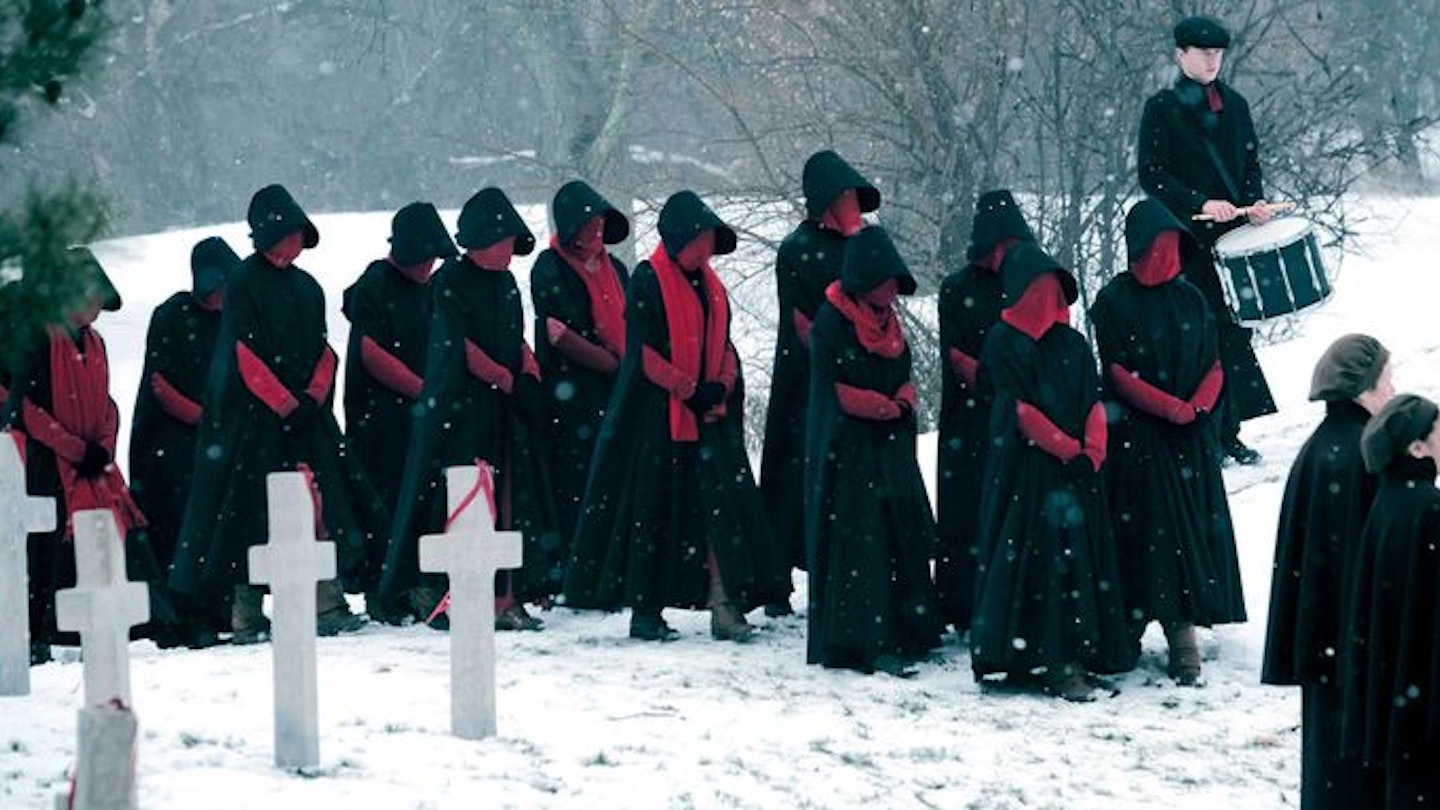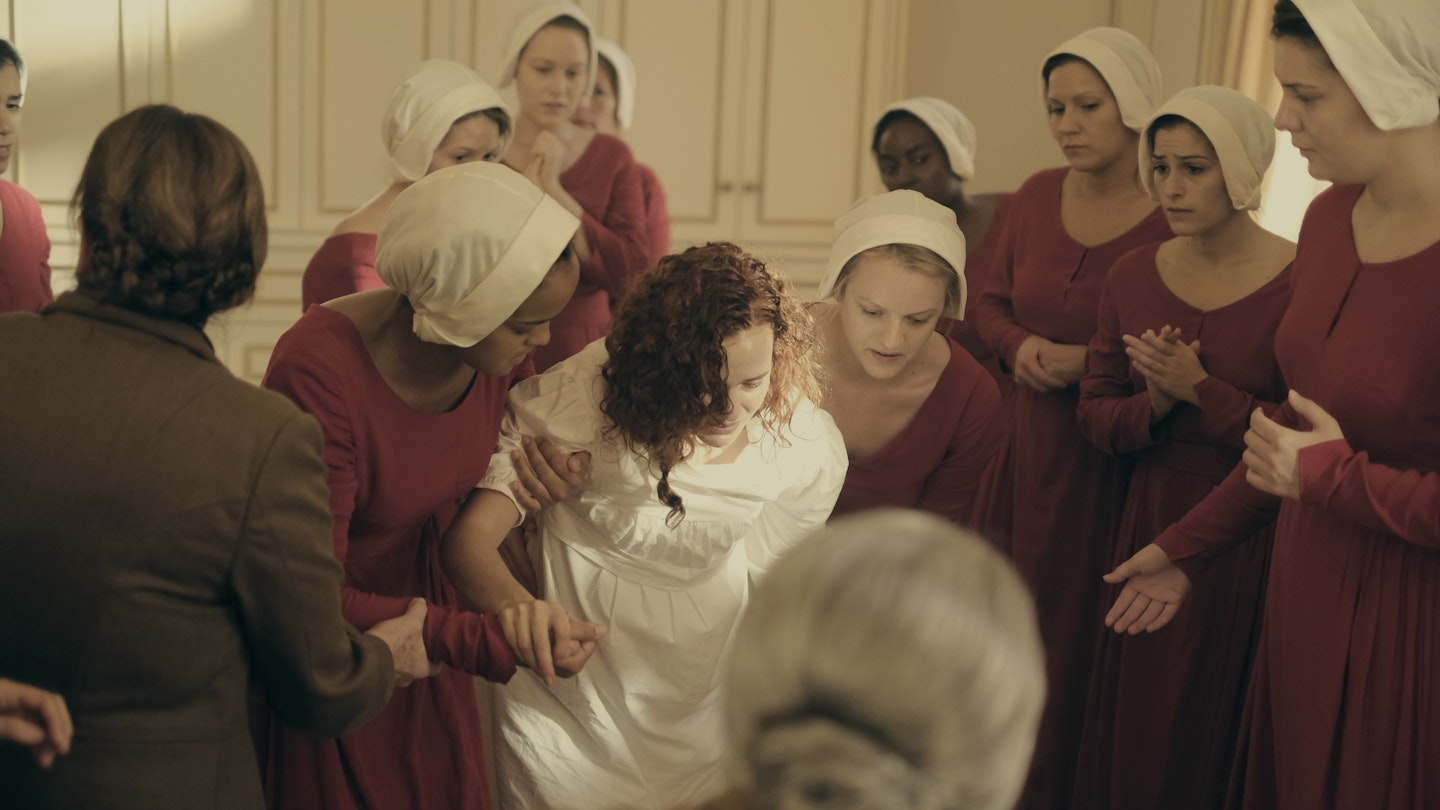Season 1 of The Handmaid’s Tale ended in salvation, or certain death, depending on your perspective. Offred/June (Moss) was hauled off, in the wake of leading the Handmaids in a startling, thrilling act of defiance. But was she being dragged away to face likely fatal punishment, or being saved by lover — and father to her unborn child — Nick (Minghella)? As June and the other terrified Handmaids are turfed out under the glare of bright lights and immediately muzzled, the answer seems clear. The scene that follows — almost entirely played out on Moss’ face, framed in the signature tight shot, and starkly soundtracked by Kate Bush’s ‘This Woman’s Work’ — is arguably more harrowing than anything in the first season. Yep. The Handmaid’s Tale is back.
There has been much speculation about the direction and storytelling focus, given the end of Season 1 was also the end of Margaret Atwood’s book. From episode one it’s apparent this isn’t just June’s world. June’s pain. The world expands around her — flashbacks, new locations and the fleshing out of secondary characters lending new context and texture. To learn more about how we, they, got here. And what the here is like for others. What it looks like. What it feels like. Especially for those who are dealing with the intersection of their gender with race and sexuality.
From episode one it’s apparent this isn’t just June’s world.
While June contemplates freedom and the sacrifices she will make for both the daughter she has and the one growing inside her, others are already free (physically at least) and some more enslaved than ever. Moira (Wiley) is now over the border in Canada with June’s husband Luke (Fagbenie), but dealing with the trauma of what she suffered in Gilead. Emily (the phenomenal Bledel) is now in the Colonies — much spoken of in the first season but not seen. The introduction of this world cracks open a new bleak vista — the dust, dirt and burnt, brown skies an oppressive manifestation of the death that hangs over the heads of these women, snaking into their insides, killing them both inside and out.
The creeping dread, tension and moments of sheer terror that defined Season 1 remain but now swell under the new stories, flashbacks revealing where the hardening, slipping of society began. This is what gives The Handmaid’s Tale new power, makes it feel so vital: that the dystopia is waiting, just at the ends of our own fingertips. The questions that it asks of our humanity, of our morality, are more pressing, and explored with more astonishing beauty and tightly harnessed rage than ever.



